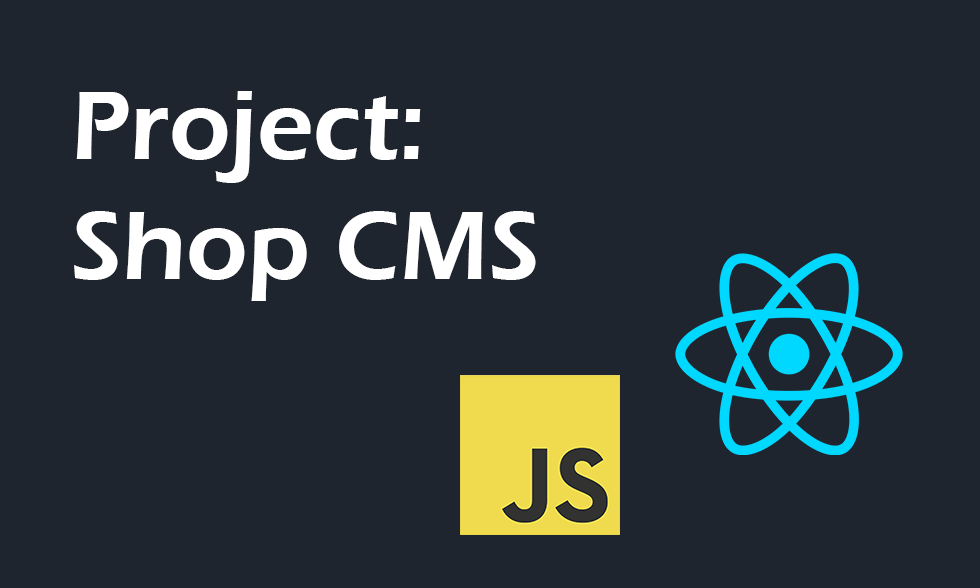Dark Mode
Project: Shopfront CMS - Part 1

Introduction
While on my path of learning how to program, myself being a junior full stack developer, the hardest thing that I've found on my journey has been direction. To that point it has also been more of what to do not how to do it. There are plenty of tutorials online telling you how to use X framework with Y dependency but I've found that there is no big project that will make you a better developer and that what you create is up to you.
This is what I like about programming. The freedom and the learning all make for such a wonderful playground of creation. In my long and arduous journey through valleys and over mountains I have found within myself that the next project that I need to work on to display some recent knowledge that I have come across is a content management system.
Background
So I was digging through some Shopify documentation, watching a couple of tutorials and learned that shopify's content management system could be implemented separately and used in an iFrame in their developer portal. So the idea came to me to create just that and then put up my own mock store front attached to it.
So with that being said I needed to select technologies to use and for that I just went with what comes quickest to me and that is a simple MERN stack with MySQL.
- React
- Tailwind
- Express
- MySQL
- Sequelize
Sequelize as an ORM has been something I've really been digging into lately and i'm realizing that ORM's in general are powerful technologies. Their mobility and functionality was something I took for granted while learning the MERN stack. Migrations being a fairly big part of my more recent learning.
Sequel Relationships
Since this is a shop front I had to think about how to handle the data. I also needed some frame of reference to be able to populate with items not too simple but also something not too complex. I decided on using clothing as my middle ground example. So now I had to think about how to handle stock as well as different colors of clothing.
To conceptualize I thought of it like this. A single piece of clothing can have multiple colors. Each color can have a different stock amount. So single stock is to individual color while multiple colors are to single clothing.
ClothingItem.hasMany(Color, {
foreignKey: "clothing_item_id",
onDelete: "CASCADE",
});
ClothingItem.hasMany(ClothingStock, {
foreignKey: "item_id",
onDelete: "CASCADE",
});
Color.belongsTo(ClothingItem, {
foreignKey: "clothing_item_id",
});
Color.hasOne(ClothingStock, {
foreignKey: "color_id",
onDelete: "CASCADE",
});
ClothingStock.belongsTo(Color, {
foreignKey: "color_id",
});
ClothingStock.belongsTo(ClothingItem, {
foreignKey: "item_id",
});
Simple Mistake
I had originally kept my relationships how I had spoken them, however on deletion the issue was that stock didnt belong to clothing only to color. So adding the relationship of clothing to stock was necessary.
ClothingItem.hasMany(ClothingStock, {
foreignKey: "item_id",
onDelete: "CASCADE",
});
One Size Doesn't Fit All
Another complexity besides relationships was how to handle different sizes. Each color has its own stock, sure, but not directly. At least not in a way that effects the customer. Stock is tied down to the color and then furthermore the size.
So I used simple small medium large conventions and added that onto the stock model.
xs: {
type: DataTypes.INTEGER,
allowNull: false,
},
s: {
type: DataTypes.INTEGER,
allowNull: false,
},
m: {
type: DataTypes.INTEGER,
allowNull: false,
},
l: {
type: DataTypes.INTEGER,
allowNull: false,
},
xl: {
type: DataTypes.INTEGER,
allowNull: false,
},
So that about sums up the complexity. A single item of clothing has a certain amount of colors to chose from. Selecting a color will show you available sizes in that color. Then selecting a size and purchasing will diminish the stock in that size and color.
It seems like a good way of thinking about the concept but I suppose only time will tell, or moreso only a better programmer than me will tell.
Closing Thoughts
Overall this project has been very exciting. Personally I am a bit more of a backend developer than a frontend one so the idea of creating an API is very enjoyable. The main problem I am facing now is developing the interface to interact with the API. Tailwind does come in really handy and has actually been my go to for frontend design lately. This blog was made using it.
Hope you all have a wonderful day. Until next time.